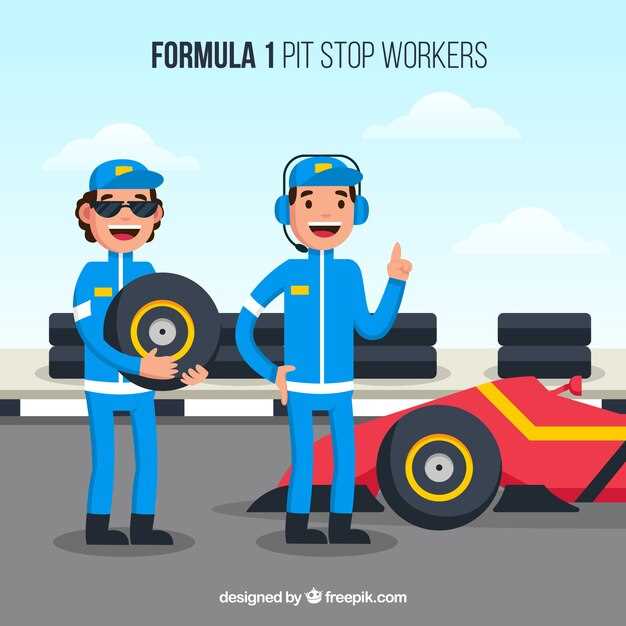
Race Suit Requirements by Series
- George Harris
- 0
- Posted on

In the high-stakes world of motorsport, the safety of drivers is paramount. A critical component of this safety is the race suit, which is designed to protect competitors from fire hazards, impacts, and other dangers inherent in racing environments. However, the standards governing these suits can vary significantly across different racing series, reflecting the unique demands and regulations of each discipline.
Understanding the variances in race suit specifications is essential for drivers, teams, and manufacturers alike. Each racing series, whether it be Formula 1, NASCAR, or rallying, has established its own set of guidelines that dictate not only the materials and construction methods used but also testing procedures and conformity assessments. These differences can influence everything from suit design to performance under extreme conditions.
Additionally, the evolution of technology and safety research continuously shapes the standards that govern race suits. With advancements in fire-retardant materials and innovative design features, race suit manufacturers must stay abreast of the latest regulations to ensure their products meet or exceed the safety requirements set forth by governing bodies. This article aims to explore the distinct standards associated with various racing series, examining how they impact driver safety and the implications for suit manufacturers in an ever-evolving landscape.
Understanding FIA and SFI Certifications for Race Suits

Race suits are critical components of a driver’s safety equipment, designed to protect against fire hazards during high-risk motorsport activities. There are two primary organizations that establish safety standards for race suits: the Fédération Internationale de l’Automobile (FIA) and the SFI Foundation, Inc. (SFI). Understanding the differences between their certifications is essential for drivers and teams when selecting appropriate protective gear.
The FIA certification is recognized globally and is the benchmark for international racing. FIA standards focus on flame resistance, durability, and comfort. Race suits that meet FIA standards are tested according to stringent criteria outlined in the FIA 8856-2000 and FIA 8856-2018 regulations. These certifications involve comprehensive testing that assesses materials, seams, and construction quality to ensure that suits can withstand high temperatures and minimize injury risk during a fire. The FIA certification is marked by a label sewn into the suit, indicating compliance with their safety regulations.
Conversely, SFI certifications are primarily recognized in North America and cater to various motorsport disciplines. SFI establishes standards specifically for different racing categories, including drag racing and circle track events. The most common SFI certifications for race suits are SFI 3.2A, with sub-categories (e.g., SFI 3.2A/1, SFI 3.2A/5), reflecting different levels of fire protection and duration of exposure. Similar to FIA, SFI tests assess materials and performance under extreme conditions, ensuring that suits provide adequate thermal protection and reduce burn injury risks. SFI labels also indicate the certification level and validity period, requiring regular updates to equipment to maintain compliance.
While both FIA and SFI certifications strive to enhance driver safety, their requirements and applications may differ. Drivers participating in international events are generally required to use FIA-certified suits, while those in certain domestic racing formats may be allowed to use SFI-certified suits. Understanding these certifications can significantly affect a driver’s choice of protective gear and their overall safety on the track.
In conclusion, both FIA and SFI certifications play crucial roles in ensuring driver safety through rigorous testing and standards. Drivers should carefully consider the requirements of their specific racing series and select race suits that meet the appropriate certification to maximize their protection and comply with regulations.
Key Features and Materials Required by Various Racing Series
Racing suits are essential for driver safety, designed to protect against fire, abrasion, and impact. Different racing series have specific requirements concerning the key features and materials used in these suits.
Fire Resistance: Most racing organizations mandate the use of flame-resistant materials. For instance, the FIA (Fédération Internationale de l’Automobile) requires suits to meet the SFI 3.2A/5 or FIA 8856-2000 standards, which specify minimum levels of thermal protection. Materials often used include Nomex, which is a lightweight aramid fiber known for its excellent flame resistance.
Layer Construction: Suits generally feature multiple layers, providing enhanced protection without compromising flexibility. The FIA standards usually require a minimum of three layers in a suit for certain series, ensuring adequate thermal insulation and improved heat resistance during a fire.
Breathability and Comfort: High-performance racing suits must balance protective features with comfort. Many modern suits incorporate advanced fabrics such as Coolmax or other moisture-wicking materials that keep drivers dry and reduce fatigue. Perforated panels are also included to enhance airflow while maintaining compliance with safety standards.
Fit and Flexibility: The design of racing suits varies between series to cater to the specific needs of the drivers. For example, Formula 1 suits are tailored for aerodynamics, featuring a snug fit that minimizes drag. In contrast, Rally Racing suits tend to allow more mobility, accommodating the wide range of movement required during navigation and driving in varied terrains.
Pocket and Reinforcement Features: Performance and practicality should coexist. Many suits include strategically placed pockets for carrying essential items such as gloves or small tools. Reinforced areas, like elbows and knees, are common additions to enhance durability and withstand wear during high-intensity situations.
Certification and Testing: Always check for certification marks on suits, which indicate compliance with specific racing series standards. Organizations like the SFI Foundation and FIA regularly test suits to ensure they meet evolving safety and performance criteria.
Overall, the key features and materials of racing suits are dictated by the demands of each racing series, balancing safety, comfort, and performance to protect drivers under extreme conditions.
Compliance Procedures and Safety Checks for Race Suit Regulations

In the world of motorsport, the safety of drivers is paramount, making adherence to race suit regulations critical. Different racing series have established compliance procedures to ensure that race suits meet the required safety standards, which vary depending on the level of racing and the governing body involved.
Certification and Testing
Race suits must be certified by recognized organizations such as the FIA or SFI. Manufacturers are required to submit their suits for rigorous testing, which evaluates their resistance to fire, abrasion, and other hazardous conditions. The suits typically undergo a series of tests that check for performance under extreme temperatures and conditions that could occur during a race.
Documentation and Labeling
Every approved race suit comes with specific documentation that outlines its compliance with safety standards. This documentation is vital for drivers and teams, as it provides proof of compliance with the regulations of the relevant racing series. Additionally, race suits are labeled with tags indicating their compliance status, including details about the certification body and the year of manufacture.
Regular Inspection and Maintenance
Beyond initial certification, regular inspections are crucial. Teams must check race suits for any signs of damage or wear before each race. Inspecting seams, zippers, and fabric integrity ensures that the suit will perform effectively in the event of an incident. Some series also require periodic checks by officials to ensure ongoing compliance throughout the season.
Enforcement of Regulations
Race officials are responsible for enforcing compliance with race suit regulations. During pre-race checks, officials inspect each driver’s suit for adherence to the standards. Non-compliance can result in penalties, including disqualification from the event. This strict enforcement underscores the importance of safety in racing and ensures that all competitors use protective gear that meets established standards.
Feedback and Updates
Safety standards are constantly evolving in response to new research and incidents within the sport. Regular feedback from drivers and teams influences updates to regulations, ensuring they remain effective. Awareness of these changes is essential for teams to keep their gear compliant and their drivers safe.
